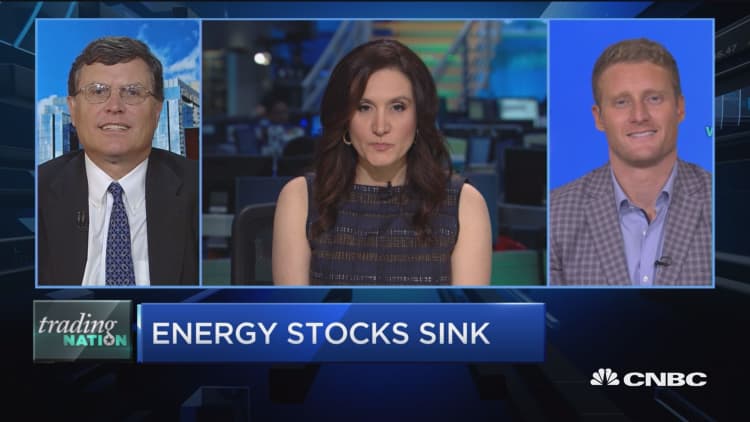
Energy stocks are riding crude oil's rally. Now, a major energy ETF just needs to break its stubborn resistance level, according to one chart watcher.
"The key level to watch is the $78 level on the XLE," Matt Maley, equity strategist at MillerTabak, told CNBC's "Trading Nation" on Thursday. "That's the level that's stopped rallies in late 2016 and twice this year. So if it can finally break above that level, it will give it a very important higher high and take it above an ascending triangle pattern so that's very, very bullish."
The XLE energy ETF reached above that level in January and May before pulling back. It touched the $78 level in December 2016 before tumbling 21 percent over the next eight months. It was at $75.54 midday Friday.
"The XLE has already broken well above its trendline going back to 2014, so a break above $78 is going to create a lot of momentum for the group and will help it outperform I think by quite a bit in the second half of the year," said Maley.
Mark Tepper, president of Strategic Wealth Partners, says crude oil prices need not rally any further to give energy stocks a boost — energy only needs to catch up to the gains already seen.
"We're still high conviction overweight," Tepper said on Thursday's "Trading Nation." "The energy stocks eventually have to catch up to the rally in oil prices."
Crude oil prices are up around 14 percent for the year and nearly 50 percent during the past 12 months. The XLE hasn't rallied to that extent. It is up nearly 5 percent in 2018 and 18 percent in a year.
"Right now we're in this period of loose fiscal and tightening monetary policy especially with the Fed pulling forward a rate hike, and during the last five periods like this in history, energy has been the best performing sector. So pricing power is strong, margins are expanding," added Tepper.
The XLE rallied 113 percent from 2004 to 2006, a stretch that included a string of Fed rate hikes.





